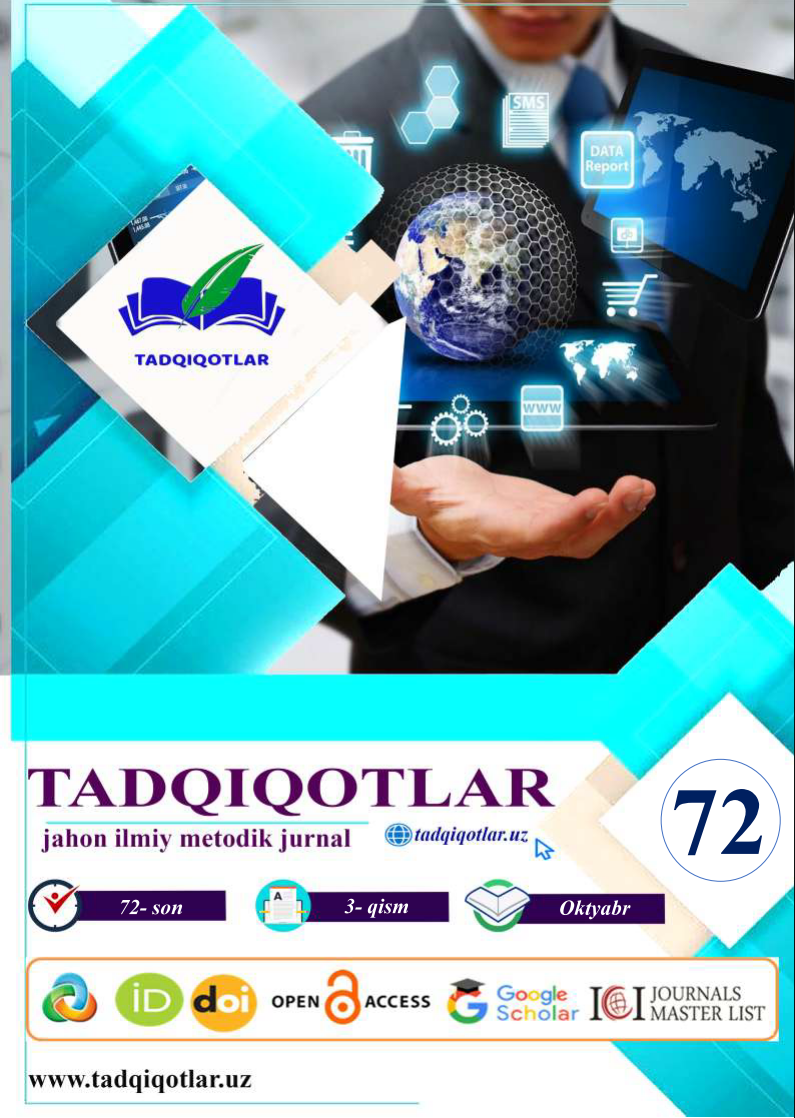NEYROLINGVISTIK DASTURLASH— IJTIMOIY SEMIOTIKANING BIR SHAKLI
Keywords:
Kalit so‘zlar: neyro-lingvistik dasturlash (NLP), muloqot (kommunikatsiya), sezgi kanallari (sensor kanallar), ijtimoiy konstruktivizm, ijtimoiy haqiqat xaritasi, semiyotika, subyektivlik, interpretatsiya, ma'no konstruksiyasi, kommunikativ harakatAbstract
Annotatsiya: Ushbu maqolada neyro-lingvistik dasturlash (NLP)ning muloqot
jarayonlaridagi o‘rni va uning ijtimoiy semiyotika nuqtai nazaridan talqini ko‘rib
chiqiladi. NLP asoslari inson miyasining biologik hisoblash tizimi sifatida qaralishi,
sezgi kanallari orqali ma'lumot almashinuvi va ijtimoiy haqiqatning subyektiv
konstruksiyasi konsepsiyalariga urg‘u beriladi. Maqola NLP va ijtimoiy
konstruktivizm orqali muloqot jarayonlarida ma'no yaratish, xabarlarni talqin qilishda
sezgi kanallarining ta'siri va har bir insonning o‘ziga xos ijtimoiy haqiqat xaritasiga
ega ekanligi masalalarini muhokama qiladi. Shuningdek, muloqot konteksti va uning
ijtimoiy ma'nolari, xususan, xabar yuboruvchi va qabul qiluvchi o‘rtasidagi o‘zaro
ta'sir asosida ma'no konstruktsiyasi ta'kidlanadi.
References
Foydalanilgan adabiyotlar:
1. Bandler, R., & Grinder, J. (1975). The structure of magic (1st vol.), A book about
language and therapy. Science and Behavior Books.
2. Bandler, R., & Grinder, J. (1982). Reframing: Neuro-linguistic programming and
the transformation of meaning. Real People Press.
3. Bodenhamer, B. G., & Hall, L. M. (2001). The user's manual for the brain (1st vol.).
Crown House Publishing.
4. Burr, V. (2015). Social constructionism (3rd ed.). Routledge.
5. Cooperrider, D. (2008). The appreciative inquiry handbook: For leaders of change.
BerrettKoehler Publishers.
6. Cooperrider, D., & Whitney, D. (1999). A positive revolution in change:
Appreciative inquiry. Corporation for Positive Change.
7. Frankovský, M, Birknerová, Z, Štefko, R, & Benková, E. (2019). Implementing the
concept of neurolinguistic programming related to sustainable human capital
development. Sustainability, 11(15), 4031.
8. Gökdere Çinar, H, & Baykal, Ü. (2022). Determining the effect of neuro-linguistic
programming techniques on the conflict management and interpersonal problem-
solving skills of nurse managers: A mixed methods study. Journal of Nursing
Management,
9. Habermas, J. (1984). Reason and the rationalization of society (vol. 1) The theory
of communicative action. Beacon Press.
10. Helmhout, M., Jorna, R. J., & Gazendam, H. W. (2009). The semiotic actor: From
signs to socially constructed meaning. De Gruyter Mouton.
11. Keezhatta, M. S. (2019). The impact of neuro-linguistic programming on english
language teaching: Perceptions of NLP-trained English teachers. International
Journal of English Linguistics, 9(6), 454.

